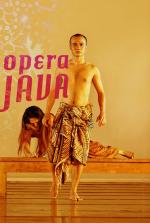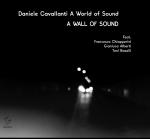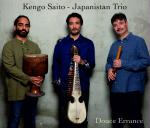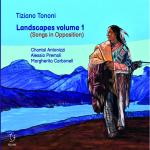

Images and sounds of the dance, music, singing and stories from his youth in Yogyakarta never left director Garin Nugroho. Opera Java is a tribute to the Javanese culture in which he grew up, as it kept lingering in his memory.
A culture that is disappearing, making this film a requiem as well. In this film one of the most performed episodes from the Ramayana epic receives a whole new interpretation.
Images and sounds of the dance, music, singing and stories from his youth in Yogyakarta never left director Garin
Nugroho. Opera Java is a tribute to the Javanese culture in which he grew up, as it kept lingering in his memory.
A culture that is disappearing, making this film a requiem as well. In this film one of the most performed episodes
from the Ramayana epic receives a whole new interpretation
The story
‘The abduction of Sinta’ is one of the most performed episodes from the Ramayana epic. While Prince
Rama is out, his beloved Sinta is abducted by the the giant king Rahwana. After Rama has freed her, after
many wanderings and adventures, he kills Rahwana and tests Sinta’s fidelity. She passes the test unharmed.
While the old tale from the Ramayana smoulders under the surface, the opera provides a contemporay
story of love and fidelity, passion and revenge, in a village in Java or elsewhere in the world. Stripped of the
stereotype characteristics from the traditional Javanese theatre, the characters surrender completely to their
emotions. As metaphors they give the opera a universal dimension.
Tradition and interpretation
In Java this episode, ‘Sinta Obong’, is told by means of dance drama and in the wayang. Garin let himself
be inspired by these traditions, but offers an original interpretation in Opera Java. With special attention to and
knowledge of the rich palette of performing arts in Java, Nugroho brings together dance and theatre from
the courts, the villages and the cities. He selects elements from different traditions, separates them from
convention, enlarges them or leaves out some parts and transforms them to a new and unique dramatic
language. A daring technique which is applied to movement, music and song, costumes and attributes. He
sought collaboration with prominent local artists from art forms, e.g. literature, visual arts, fashion and
photograhy, to create this contemporary spectacle. Appliances from daily life have become art objects and
acquired another function. The ‘slendangh’ (scarf, sling) for instance is seen in Java as a multi-functional
extension of the body, but for Rahwana it is a symbol of his power and masculinity.
Musicians
More than 25 Indonesian musicians, dancers and actors contribute to this spectacle. The music is
composed by Rahayu Supanggah, securing the future of old Javanese traditions by renewing them. He
combines musical instruments from gamelan and folk music, he boldly allows the previously strictly tonal
systems ‘slendro’ and ‘pelog’ to be combined and he even adds western instruments like a viola or even a full
string quartet. The choreography is from Eko Supriyanto, Heri Dono is responsible for the wayang art and
the objects. The opera was filmed live in Tropentheater, Amsterdam in 2010.
Our Playlist
Our olaylist on Spotify, dedicated to P
re Minimalism, Minimalism and Post Minimalism.
© 2025 Felmay Srl - P.I. 06974300011 | Powered by: Riccardo Marino



























